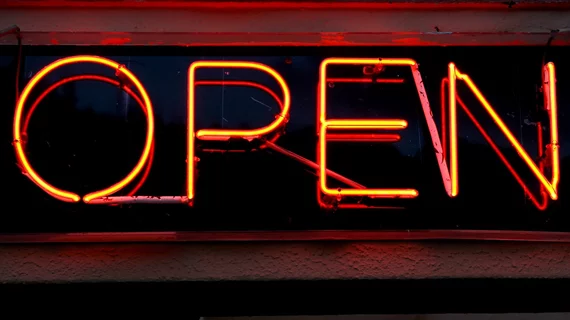4 steps radiology providers can take to return from ‘COVID-19 induced imaging austerity’
Radiology providers across the globe have been forced into a holding pattern as they put off nonurgent imaging and wait for business to return to some semblance of normal. Two radiology experts this week are offering a few tips any practice can take to begin these preparations.
It’s still unclear when the specialty may exit this age of “COVID-19 induced imaging austerity,” experts from Harvard- and the University of Dublin-affiliated hospitals wrote Monday in JACR. But the longer these measures are in place, the larger the backlog of imaging studies. Practice leaders must plan carefully in the meantime to avoid “overwhelming our system” once things start to normalize.
“Radiology departments are likely to be severely restricted for a considerable length of time even after populations are permitted to move more freely again,” Boston Children’s Hospital’s George Taylor, MD, and Children’s Health Ireland’s Aisling Snow, MD, wrote May 4. “Bringing radiology back to full function will require a balance of clinical assessment, ethical judgement and logistical planning.”
The pair of docs presented their colleagues with four simple steps to begin exiting this imaging age of austerity:
1) Convene a COVID-19 recovery task force that includes radiologists, administrators and techs, all tasked with prioritizing care post-pandemic. The group should form close bonds and take time to document each referrer’s preferred means of communication about patients.
Decisions should be documented clearly, the authors wrote, and backed up with historical trends and any other information on hand.
“Specific data about a department’s preexisting waiting lists, including volume and prioritization categories, will form an important basis for planning,” Taylor and Snow wrote.
2) Assess the system’s capability to reschedule deferred appointments and absorb this backlog of imaging studies. Whether such capacity can return to normal, increase or remain suppressed will depend on staffing, financial considerations and whether the practice has partners, the authors noted.
All of these issues will vary vastly from one organization to the next and depend on the patient population served.
“Financial factors will be critical in rebuilding services, and reduced funding will limit strategies such as purchasing of additional equipment or hiring of additional staff,” Taylor and Snow advised.
3) Design the recovery process, taking into account the stress this transition will place on all stakeholders. With many institutions at less than full strength, practice leaders will need to fully reevaluate all items on the wait list, focusing on those with the most urgent clinical needs.
“A full reevaluation of all cases on the waiting list may be justified to allow equity of prioritization across all specialties and referrers,” the pair wrote.
Tackling this reorganization of work will require considering numerous factors, including whether there is a known or potential disease, along with insurance status and preapproval factors. “The majority of radiology departments will not have the capability to return to full function for some time, and it may be prudent to identify a basic achievable weekly capacity in each modality,” they added.
4) Devising a clear communication strategy about these plans and tailor it to management, radiologists, referrers and patients. This will help address the barrage of questions and concerns expected in the coming weeks.
“Being able to shine a light on the estimated timeframe for increased demand on resources may also improve staff cohesion and ability to cope with the added pressure,” Snow and Taylor wrote.
“Planning our own recovery will ultimately protect patients and staff and enable us to respond accordingly as the uncertainty of the coming months unfolds,” they added later.
You can read the entire pre-proof opinion piece online at JACR.org. This is the latest in a series of such pieces from the Journal of the American College of Radiology, with another last month exploring how one department is preparing for the oncoming “crisis after the crisis.”

